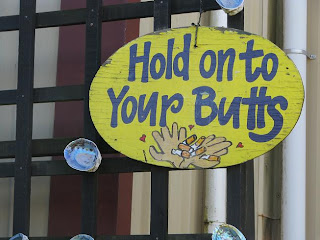 |
| Stewie has warm feet too! |
For the past couple of weeks I have been working on re-configuring our propane boiler to make our in-floor radiant heat more efficient. I have been pondering how to do this for quite some time. The problem is, the original water pumping system was very inefficient. In fact, using the propane boiler with the original pumps to heat the house roughly doubled our electrical usage. And of course we need the boiler at a cold time of year when we have the least amount of energy to spare. Up until now, we've used our wood stove solely to heat the house. But now we have the option for toasty floor heat too. Here's how...
Originally, the boiler was configured with 3 circulating pumps: one pump circulated water through the boiler itself, and the other 2 pumps circulated water through each of 2 zones in the house. Each of the pumps was oversized for our heating system - they pumped a lot more water than they needed to and each consumed ~85 watts for a total of 265 watts. Our hot water pipes are stapled up under our floor. Since the pipes aren't embedded in the floor, not very much of the heat gets transfered into the floor and much of it gets returned to the boiler. Since the heat transfer is so slow into the floor, there is no point in pushing the water through the pipes this quickly.
So, I started looking into some lower flow solutions that would use less energy. The first thing I did was calculate the amount of water we need to move. (Thanks to folks on the following forum for helping me out with the calculations:
Terry Love DIY Forum)
BTU requirements:
We live in a cold area, but our house is extremely well insulated. Walls and ceiling are both > R40. Our house is 1300sq ft and is designed for passive solar (If it's above 0F, we don't need supplemental heat until the sun goes down). For my calculations, I used a heat requirement of 60,000BTU/hr, but I think this is definitely overkill.
Flow requirement:
The heating array is made up of (60) 30' lengths of 1/2" pex for a total length of 1800'. These are divided into 7 different loops of 257' each. Each loop is responsible for 8500BTU/hr. Assuming a 20 degree temperature drop, then the flow through each loop should be 0.85 gal/min. Total flow for all 7 loops combined is 5.95 gal/min.
Next, I needed to calculate how hard the pump would have to push (in feet of head) to move that much water through our pipes.
Head Calculation:
Assuming 0.03 ft of head per foot and a loop length of 257ft, the total head is 7.71ft. This only needs to be calculated for one loop. The fact that we have multiple loops in parallel doesn't mean the pump has to push any harder, it just needs to push more water.
So, I finally started shopping around for pumps. Three pumps for our system is overkill. There isn't much benefit in having multiple zones, and one pump can easily handle the whole system. The first pump I looked at was 24V dc pump from Ivan labs that we could run directly off our battery system:
Ivan Labs El-Sid. The pump consumes about 10W but it doesn't move very much water: only about 3gallons per minute at 3 feet of head, so it would require 2 or more pumps to meet the needs of our system. At almost $300 per pump, the price was going to add up rather quickly. Finally, I stumbled upon the following article:
Grundfos Alpha Case Study. This pump has multiple speeds, very low power consumption (15-45W) and our flow requirements fall right in the center of it's capabilities.
With a lot of help from folks online and a local plumber at R&R pumps in Helena I decided to dive in with both feet and do the installation myself. It took a bit of practice to get used to solder 1 1/4" copper pipe, but with a second propane torch and some help from Cassie we finally got the new pump installed. Last night was our first trial run, and...
IT WORKS!!!
 |
The pump has a digital readout, so we can easily tell how
much energy it's using and how much water it's pumping at any time. |
By installing the new pump, we lowered our energy consumption from 265W to 20W! That is 13 times less energy! Even if we ran the pump all day, it would only use 480W-Hours of energy. The previous setup would used 6360W-hours for a full day of use -- we don't even produce that much electricity on a good day in the winter. We are still in the trial stages -- I may need to push a little more water through the system to meet our needs, but I have the flexibility with this pump to do that if necessary.
 |
Here is what the boiler looks like now.
It looked like a rat's nest of piping before
the conversion too. |
We still don't really like the idea of heating with propane and will probably continue to primarily heat with wood, but it's really nice to have the option and know that we can leave the without our batteries dying and our pipes freezing. Eventually, we plan to install solar hot water heater. At that point we can use the same pump to heat the floors -- sans propane!























